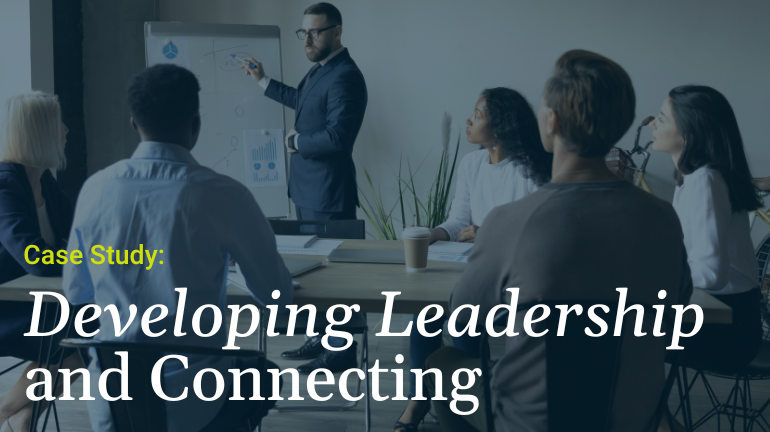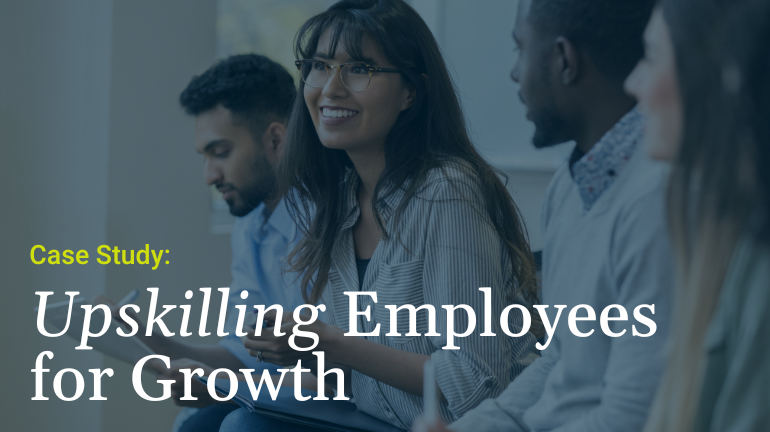Workforce Resource Management

INNOVATION | EMPLOYEE GROWTH | MEANINGFUL RELATIONSHIPS
An investment in our people is equivalent to an investment in our organizational health.

Background
With an influx of employees nearing retirement age, one of our federal clients recognized a need to create a pipeline of talent to effectively deliver long-term strategy without losing knowledge and skillsets through retirement. Nearly 30% of the client’s workforce has long tenure of over 10 years, which is highly valued by the organization.

The Challenge
Anticipating an influx of retirements and subsequent loss of knowledge and skillsets, a federal client identified roadblocks to successfully address their future workplace needs:
- Short-term planning strategies
- Siloing
- Scarcity mindsets
- Competing priorities
- Limited bandwidth
- Lack of tools and technologies for human capital management
During Evans’ discovery, consultants partnered with the client to identify and establish several organizational values to aid against possible roadblocks – the willingness to invest in people, specifically to develop meaningful relationships, support employee growth, and encourage innovation.
WRM helped the organization establish resource and succession plans, performance management aids, talent development programs and services, and mentoring programs. Expanding upon this, structures were created to develop meaningful and needed skillsets in new employees by creating learning forums, knowledge cohorts, and resources that allowed them to thoughtfully consider their career growth. Additionally, these structures were constructed to foster an environment conducive to the long-term retention of those employees.
WRM includes several tools and services focused on assisting managers in the strategical assessment of their resource management needs, supporting the investment in their employees’ development to ensure that organizational performance is not compromised. WRM also developed the underlying infrastructure needed to successfully scale and utilize this human capital function in the future.
The success of this comprehensive and integrated HCM function was achieved through thorough engagement and collaboration with several stakeholders within the organization. The combination of the following approaches cannot be emphasized enough in the success of this project: project management, strategic analysis and planning, product and service development, change management, and human-centered design. The most critical aspects of some of these methodologies supporting the development and implementation of WRM are listed below:
Strategic Analysis and Planning
- Several techniques were used to define and understand people, organizational problems, and other related areas associated with strategy, culture, management, leadership, and teaming.
- An organizational assessment was conducted to identify the root causes behind the identified immediate needs. We then partnered with managers to co-create values of the desired culture.
- Interviews and facilitated discussions were held with the organization’s leadership and employees to better understand the pain points and opportunities associated with the workforce.
- A strategic plan was developed to identify risks associated with the loss of both organization and role-specific knowledge. A three-year vision was designed to address the organization’s workforce management challenges.
Project Management
- Sound project management practices were used to ensure products and services were implemented on time, and within scope and budget.
- Annual objectives were identified and broken down per quarter with specific outcomes to be met. The objectives aligned with the three-year vision.
- Metrics are collected regularly to measure the impact and outreach of the products and services developed.
Human-Centered Design
- The team employed a variety of skills and techniques to create, reimagine, and continuously improve products and services.
- As advocated in Human-Centered Design, the team approached the project with curiosity, creativity, and empathy to meet business objectives. The team used Design Thinking principles and Service Design to develop several of the WRM services and products.
- Three human-centered design principles utilized are empathy to truly hear users’ needs, beginner’s mindset to remain curious and open-minded, and bias for action to experiment with ideas and adapt to new insights.
- This approach allowed us to involve employees from the beginning, validate ideas with users, scale incrementally, pivot along the way, and invite co-creation and holistic integration during implementation.

The Impact
Nearing its third year, the program outcomes include:
- Improved employees’ access to HCM tools
- Successful integration of WRM liaisons to deliver standardized services and effective outreach to employees
- Improved cohesion across leadership teams
- Junior talent hired to build a bench and development of learning forums to ensure knowledge and skillset transfer





